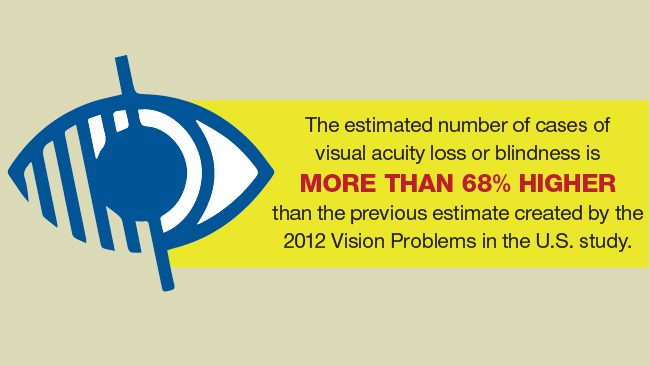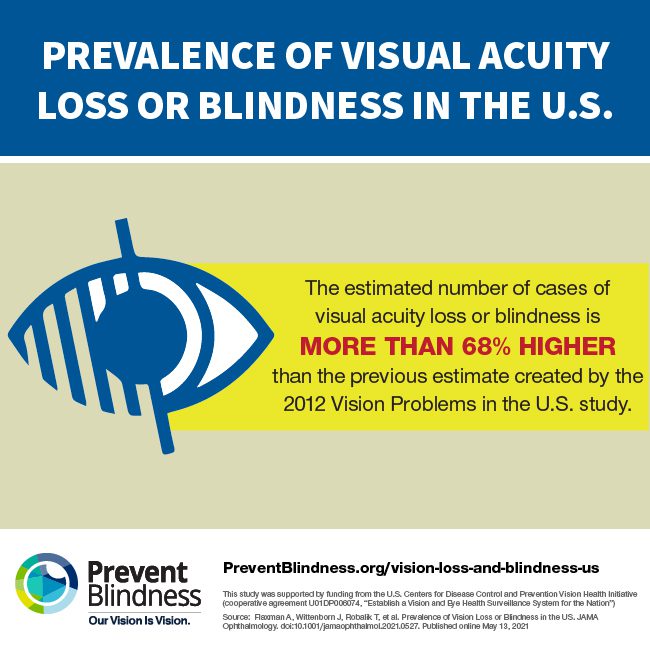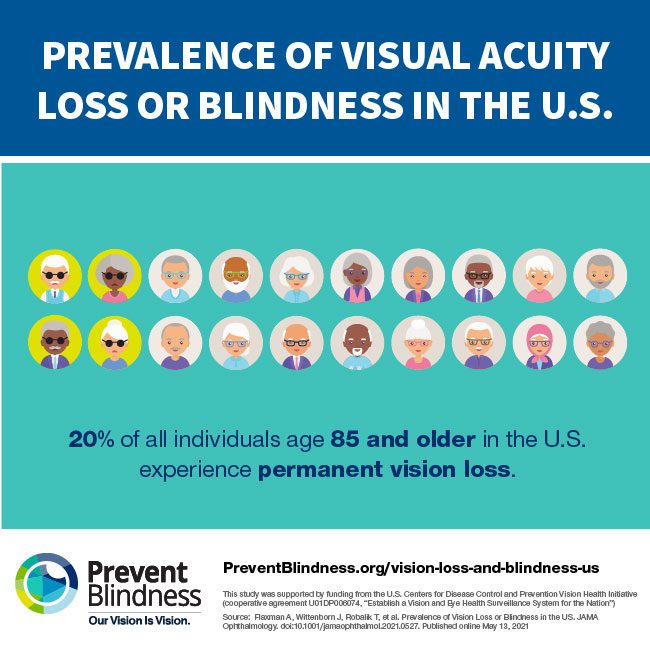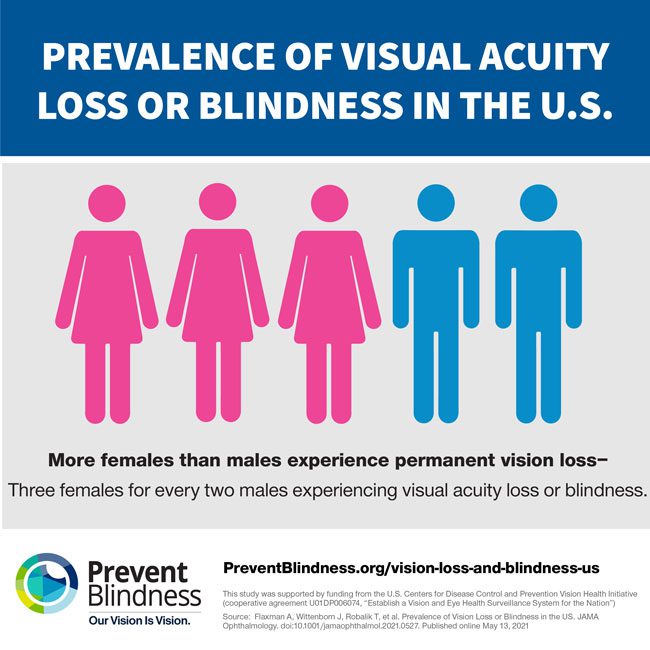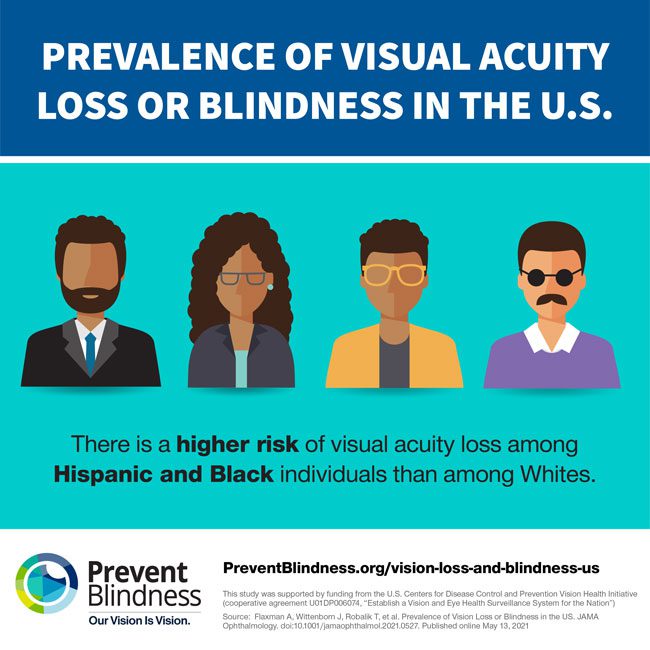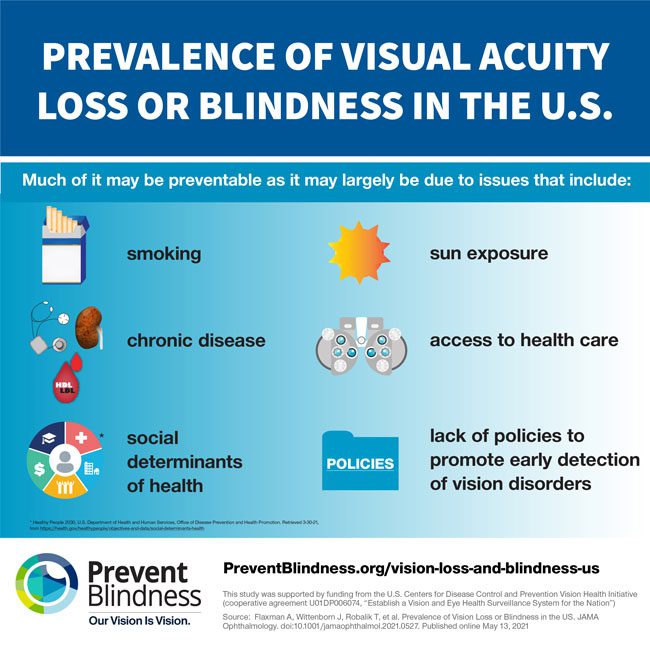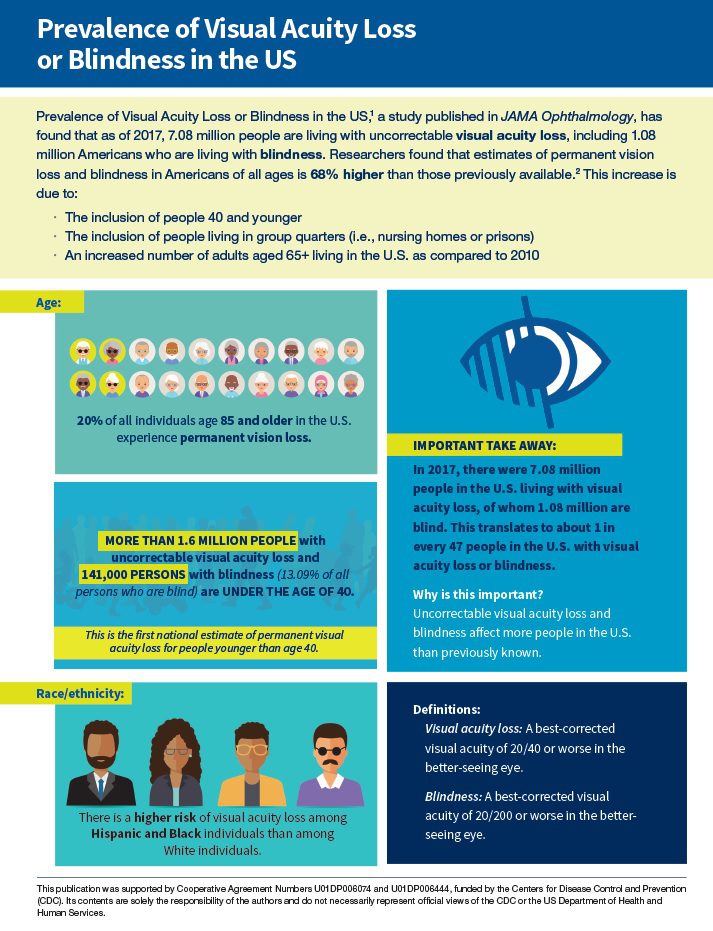The Prevalence of Visual Acuity Loss or Blindness in the United States study provides analysis of data by age, sex, race and ethnicity, institutionalized, not institutionalized, and geographic region. This study has shown substantially more people with visual acuity loss and blindness than previously published.
Read the Prevalence of Visual Acuity Loss or Blindness Report
Read the Prevalence of Visual Acuity Loss or Blindness Press Release
The estimated number of cases of visual acuity loss or blindness is more than 68% higher than the previous estimate created by the 2012 Vision Problems in the US Study. This increased number is due to the inclusion of people younger than 40 years old, adults in group quarters, such as nursing homes or jails, and the growth in the number of older Americans.
Researchers found more than 7 million people are living with uncorrectable vision loss, including more than 1 million Americans who are living with blindness.
Blindness is defined as “a subset of the visual acuity loss group whose vision with any correction is 20/200 or worse in the better-seeing eye.”
Visual acuity loss is defined as the best corrected visual acuity of 20/40 or worse in the better-seeing eye.
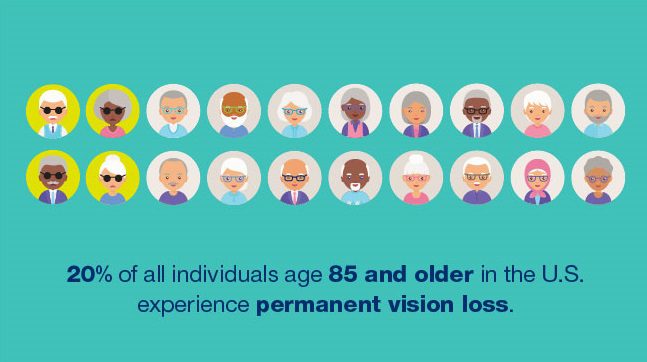
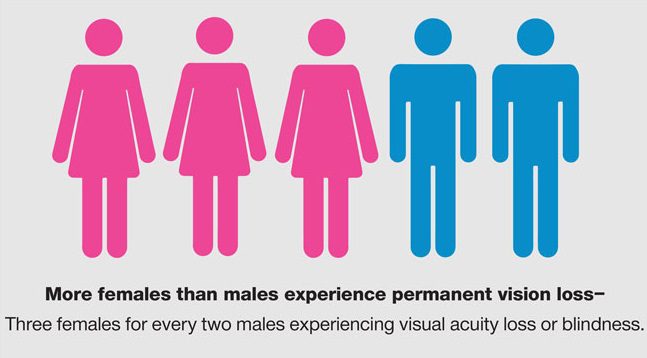
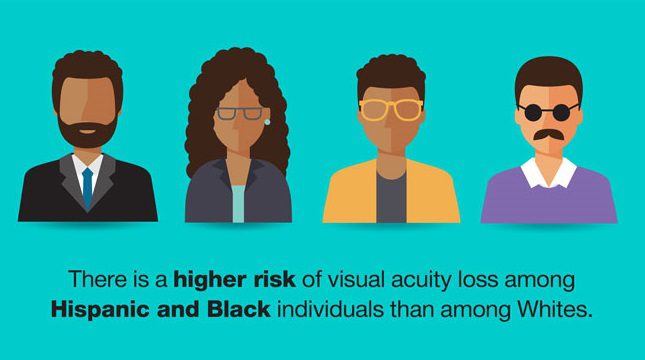
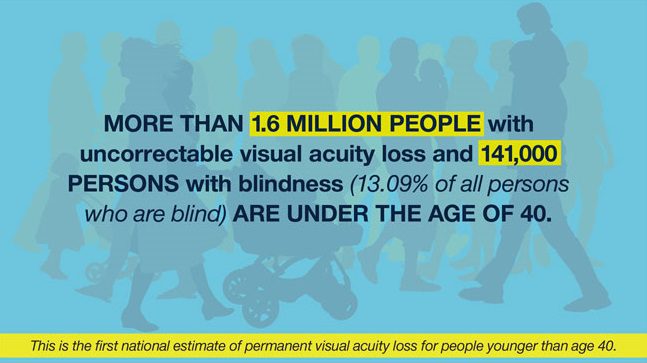
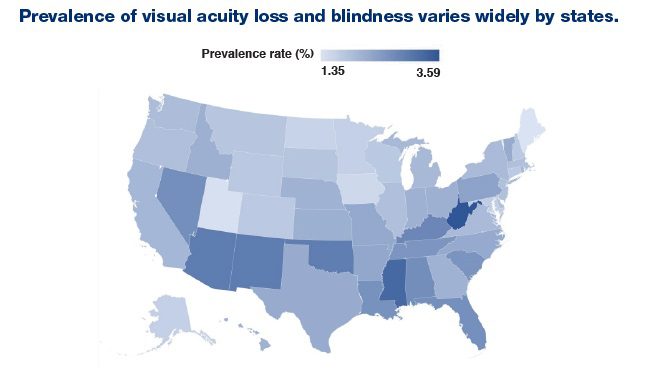
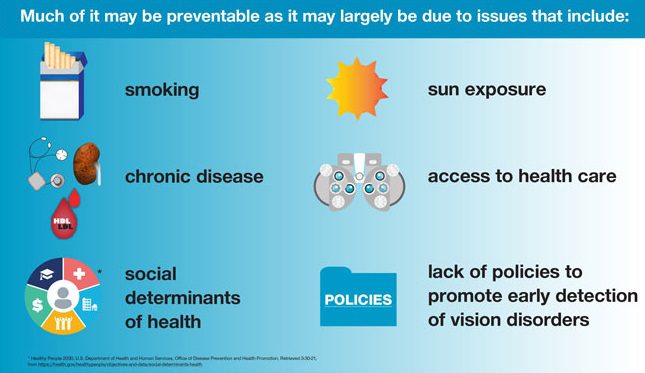
“Prevalence of Visual Acuity Loss or Blindness in the US,” was authored by researchers from the Institute for Health Metrics and Evaluation at the University of Washington, NORC at the University of Chicago, and the Centers for Disease Control and Prevention’s Vision Health Initiative, with support from Prevent Blindness.
This study was supported by funding from the U.S. Centers for Disease Control and Prevention Vision Health Initiative (cooperative agreement U01DP006074, “Establish a Vision and Eye Health Surveillance System for the Nation”)
Source: Flaxman A, Wittenborn J, Robalik T, et al. Prevalence of Vision Loss or Blindness in the US. JAMA Ophthalmology. doi:10.1001/jamaophthalmol.2021.0527. Published online May 13, 2021

